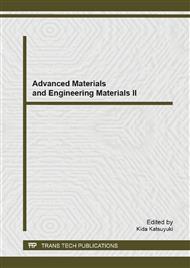p.377
p.381
p.385
p.391
p.396
p.400
p.404
p.409
p.413
Study on the Flow- Induced Corrosion of P110 Oil Tube with an Electrochemical Method
Abstract:
P110 Steel Flow-induced corrosion Electrochemical Method Abstract. Electrochemical measurements have been used to investigate the flow-induced corrosion behaviors of P110 oil tube in 3.5wt% NaCl solution. The corrosion rates were calculated by linear polarization resistance method and weak polarization method respectively. The results demonstrated that corrosion rate of P110 steel increases sharply with the flow velocity increase when the impact angle is 30°, but it reach the first plateau when the fluid velocity changes from 5.6 m/s to 7.8 m/s and the corrosion rate increases sharply again when the velocity beyond 7.8 m/s. After that, corrosion rate decrease when the velocity is more than 10.0m/s. It is demonstrated that the corrosion rate of steel P110 is controlled by cathode reaction of oxygen diffusion in the 3.5 wt % NaCl solution when the flow velocity is over 10.0m/s.
Info:
Periodical:
Pages:
396-399
Citation:
Online since:
April 2013
Authors:
Keywords:
Price:
Сopyright:
© 2013 Trans Tech Publications Ltd. All Rights Reserved
Share:
Citation:


